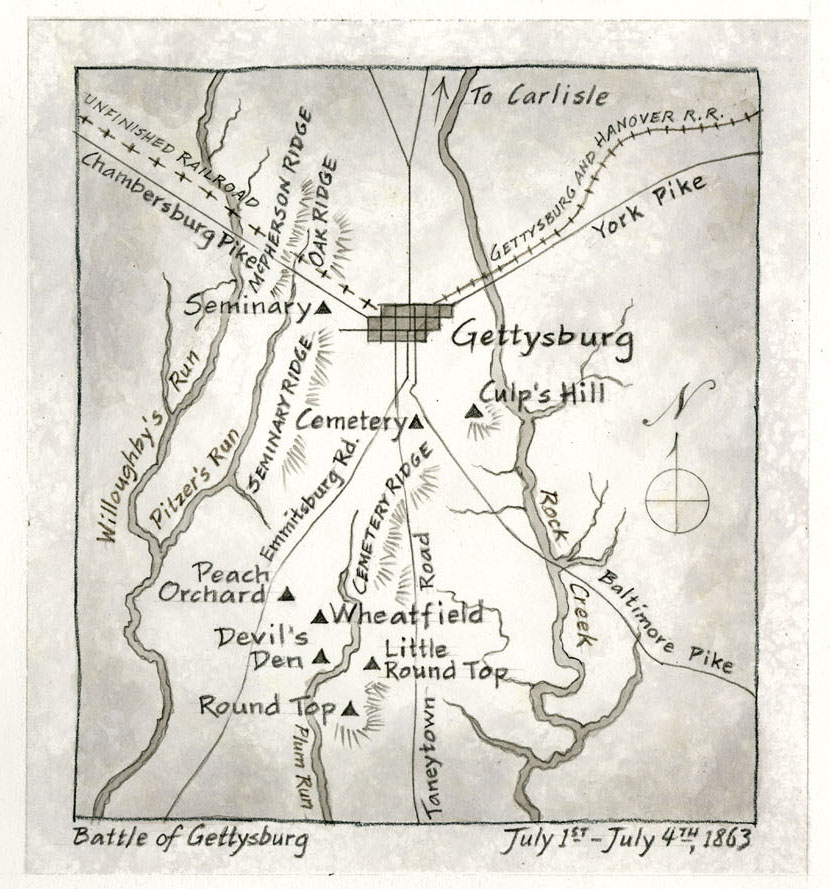Battle of Gettysburg
▲ Erasmus Corwin GilbreathDignity of Duty: The Journals of Erasmus Corwin Gilbreath2015
Soldiers from the Union and Confederacy collided at Gettysburg, Pennsylvania on July 1, 1863. On the first day of battle, the Confederate Army forced the less prepared Union lines to retreat. However, on the second day, both armies were fully assembled into battle lines. General Daniel E. Sickles stretched out the troops of the Third Corps and neglected to secure the high ground at Little Round Top. General Robert E. Lee noticed this vulnerability and sent General James Longstreet’s two divisions to attack Sickles’ position. Much of Sickles’ Corps was destroyed, but the Union line was held thanks to rapid reinforcement by the reserve Fifth Corps. Across the entire battlefield, the Union defenders held their lines.
On the third day of battle, Lee’s frontal attack (known as Pickett’s Charge) was preceded by a huge but ineffective Confederate artillery barrage. The massive infantry attack failed to break the Union line, and the costliest battle ever fought on American soil ended in a Union victory.
